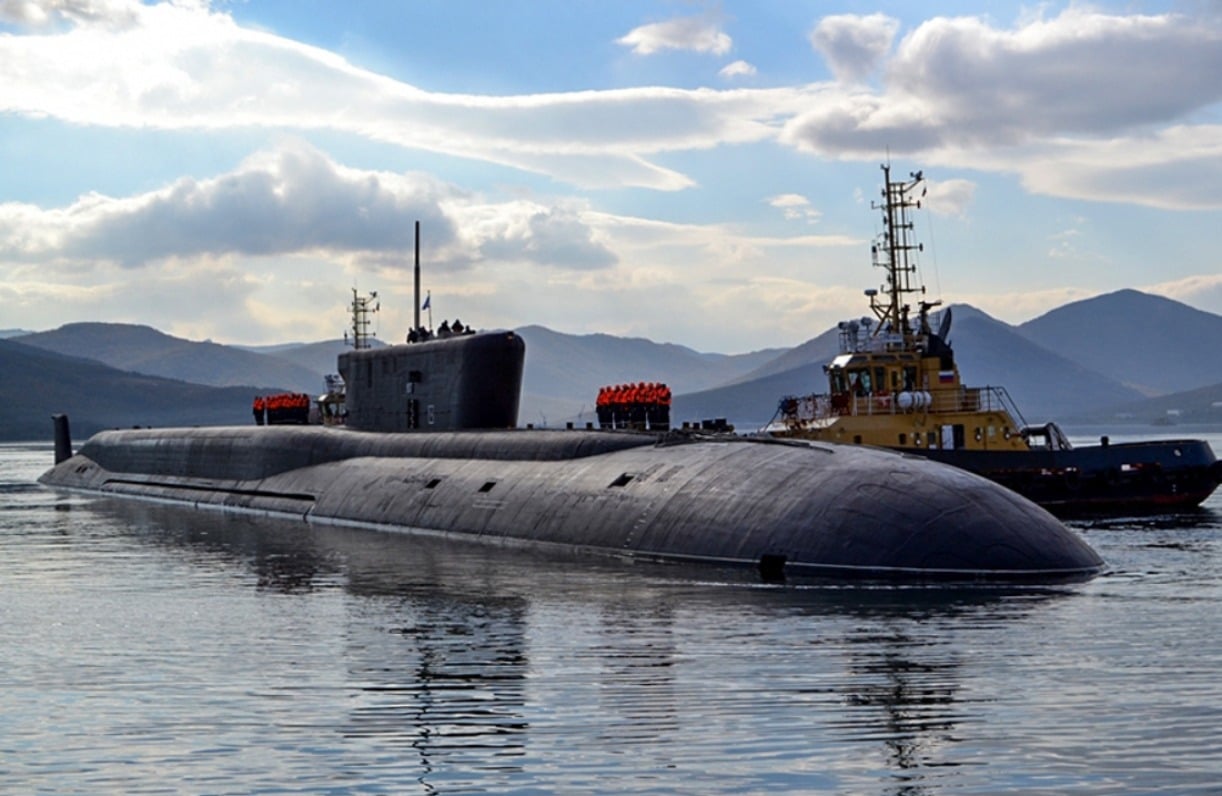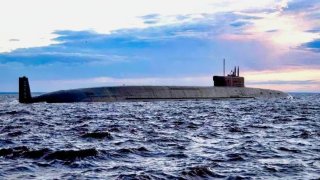Borei-Class: The Nuclear Missile Submarine Built to Strike America
The Borei-class is equipped with 16 Bulava SLBM silos, capable of carrying 160 nuclear warheads, and features advanced sonar and navigation systems, enhancing its stealth and combat capabilities.
Summary and Key Points: The Borei-class nuclear-powered ballistic missile submarines, originally called Project 955 by the Soviet Navy in 1980, represent a significant advancement in Russian naval technology. Designed to replace the aging Delta III and Delta IV classes, these submarines pose a substantial threat to the US Navy and NATO forces.

-Despite the Soviet Union's collapse, Russia continued the project, with the first submarine, Yury Dolgorukiy, launched in 2008.
-The Borei-class is equipped with 16 Bulava SLBM silos, capable of carrying 160 nuclear warheads, and features advanced sonar and navigation systems, enhancing its stealth and combat capabilities.
Borei-Class Submarines: Russia's New Maritime Threat
Project 955 was the name that the Soviet Navy first called their proposed Borei-class nuclear-powered ballistic missile submarines in 1980, when these subs were first designed. Later on, the Russians would fund Project 955A, or the Borei-A submarines as an augmented version of the older Soviet era model.
These subs were designed to replace the aging Delta III and Delta IV-classes of Russian nuclear-powered ballistic missile submarines that once populated the Russian Navy’s fleet.
The Borei-class, according to its proponents, represent a significant advancement in Russian naval technology and pose a significant threat to the US Navy and NATO forces.
Design & Development
As noted above, the first design work on Project 955 began in the mid-1980s. The Borei-class was designed by the Rubin Design Bureau and built by Sevmash.
The construction on the first vessel, the Yury Dolgorukiy, began in 1996. This was a system that had a significant complication in the course of its design and development: the Soviet Union collapsed and the Cold War ended.
Nevertheless, the post-Soviet Russian government was committed to continuing with Project 955.
Initially, the Borei-class was designed to carry the R-39UTTH Bark missile but it was inevitably redesigned to accommodate the newer Bulava submarine-launched ballistic missile (SLBM) when the Russians ultimately abandoned the Bark missile.

After more than a decade of being built in destitute, post-Soviet Russia, the first Borei-class submarine was launched in 2008 and began its sea trials a year later, in 2009. The submarine took 30 years to design, develop, and deploy! Despite this fact, though, the Borei continues to pose real challenges for the supposedly far more advanced American and NATO navies.
Technical Specifications
The Borei-class submarine is 170 meters long, 13.5 meters wide, and has a draft of 10 meters. It has a submerged displacement of 24,000 tons and can reach a top speed of 29 knots. The submarine is powered by a single OK-650 nuclear reactor and carries a crew of around 107 men.
The Capabilities of the Borei-class
The Project 955 Borei-class submarine is, as mentioned earlier, equipped with 16 Bulava SLBM silos. These can carry up to 160 nuclear warheads. The Bulava SLBM has a range of approximately 8,000 kilometers and can carry up to 10 nuclear warheads each.
The submarine is also in possession of six 533mm torpedo tubes for launching torpedoes and anti-ship missiles.
Upgrades
Since its first sailing, the Borei-class submarine has necessarily undergone several refits and modernizations. The biggest improvement, though, was the change in nuclear missile launches. What’s more, the sub was given upgrades to its sonar and navigation systems, making it far more lethal to the US Navy it could square off against at some point (if things keep going as they are in Ukraine).
What is the Threat to the US Navy?
The Borei-class poses a challenge to Western powers at sea because of its advanced capabilities and firepower. The submarine’s ability to launch nuclear warheads makes it formidable both in land-attack capabilities and anti-ship missions.

What’s more, the modifications the Russians have made to this boat over the years, upgrading its sonar systems and stealth technology onboard, make it more difficult for the Western navies to track, detect, and attack.
About the Author
Brandon J. Weichert, a National Interest national security analyst, is a former Congressional staffer and geopolitical analyst who is a contributor at The Washington Times, the Asia Times, and The-Pipeline. He is the author of Winning Space: How America Remains a Superpower, Biohacked: China’s Race to Control Life, and The Shadow War: Iran’s Quest for Supremacy. His next book, A Disaster of Our Own Making: How the West Lost Ukraine, is due October 22 from Encounter Books. Weichert can be followed via Twitter @WeTheBrandon.
All images are Creative Commons.
From The Vault


